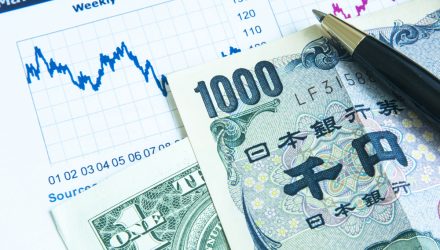When it comes to choosing the best performing economies during a coronavirus-stricken second quarter, it’s almost a matter of choosing the best from the worst. In the case of Japan, however, its economy manages to fare better than others in comparison.
As such, it’s important to not forget diversification via the land of the rising sun through Japan-focused exchange-traded funds (ETFs). As economies around the world look to reopening their doors to businesses, the third largest economy could be poised for a strong rebound.
Per a CNN Business report, Japan’s GDP “shrank 7.8% in the second quarter compared with the previous quarter, the country’s Cabinet Office said on Monday. That translated to an annual rate of decline of 27.8%, the worst since modern records started in 1980 and the third consecutive quarter of contraction.”
However, with the weight of the coronavirus on its shoulders, Japan’s economy managed to forge on better than other economies around the globe.
“But Japan performed better than other major economies in the April-June period when the United States and Germany both recorded 10% falls over the previous quarter and British output crashed 20.4%,” the report added further.
Still, that’s not to say there isn’t work to be done for Japan as it moves forward with a rough start to 2020.
“While not as large as the drop seen in other advanced economies, the Q2 fall in growth nevertheless marks the third consecutive quarter growth has contracted, underscoring Japan’s vulnerability to further downside shocks,” Oxford Economics wrote in a note.
ETF investors looking at Japan-focused opportunities can look at the Goldman Sachs ActiveBeta Japan Equity ETF (GSJY). GSJY seeks to provide investment results that closely correspond to the performance of the Goldman Sachs ActiveBeta® Japan Equity Index.
The fund seeks to achieve its investment objective by investing at least 80% of its assets (exclusive of collateral held from securities lending) in securities included in its underlying index, in depositary receipts representing securities included in its underlying index and in underlying stocks in respect of depositary receipts included in its underlying index, which is designed to deliver exposure to equity securities of Japanese issuers.
Because GSJY is an ActiveBeta® ETF, that means it follows a performance-seeking methodology that aims to select stocks based on well-established attributes of performance while remaining benchmark-aware. As such, factor diversification is achieved with four distinct performance attributes: good value, strong momentum, high quality, and low volatility.
Furthermore, ActiveBeta® ETFs are among the most competitively priced ETFs on the market. For example, the cost of Goldman Sachs’ ActiveBeta® Japan Equity ETF is 25 basis points, compared to the industry average for smart beta ETFs of 48 basis points.
For more information on GSJY, click here.
Additionally, for more market trends, visit ETF Trends.









